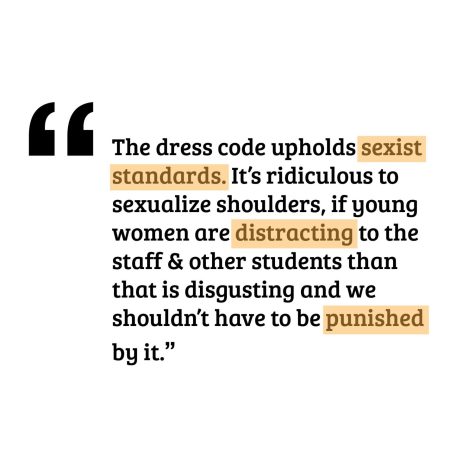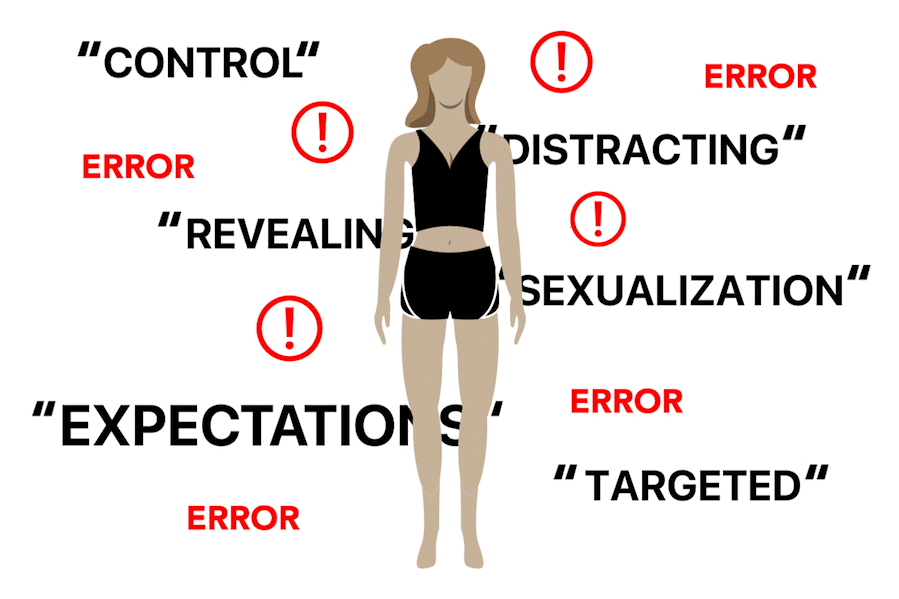Breaking the code
With controversial dress code policies in place within our district, our OneMaize Media team set out to understand how teachers and students perceive our current dress code rules.
Girls are often criticized by what they wear in the school setting, and the current USD 266 school dress code often upsets female students who are held to different standards because of differing body types.
January 31, 2022
Complaints, approval, critiques, and praises, although opposites, have all been associated with the USD 266 dress code policies.
Every August, the debates rise again and become daily topics at schools, the Maize district is no exception. Although the topic is at large once again, nothing has changed to improve the circumstances. One of the most controversial expectations for students the administration has to face every year, the dress code.
In a recent survey, 51 out of the 144 students say that they have been dress coded before. Out of those 51 students that have been dress coded, 21 students say they’ve gotten dress coded for their shirt length, and 16 for length of their pants, shorts, capris, or skirts.

Around 58% of students say they do not support the school dress code. Their reasons range from sexism to sexualization. Junior Kate Crisler said she doesn’t see how boys “being distracted”, specifically sexually distracted, is girls’ problem.
“It is not my job to control the sexual thoughts of my peers, especially not by adapting my behavior, ” Crisler said.
On the first full week back to school after winter break, administration held a meeting addressing the expectations within the school. One category being what is appropriate to wear to school, and what is not.
Junior Jenna Blaylock voiced what she thought about not only the meeting, but the time spent lecturing about the dress code violations as well.
“It’s very clearly targeted towards girls as a majority of the rules within the dress code apply to them,” Blaylock said. “The meetings Maize High held last week proved this even further. When reviewing the rules on the dress code, one of the very first points stated was along the lines of “Ladies, it just seems the shirts keep getting shorter and shorter and the amount of midriffs seem to be more frequent.”
Other students feel this way also. Crisler also believes that by talking about how when talking about the dress code, it is mainly directed towards females.
“The dress code is a symbol of control the world places on women’s bodies. Every time the dress code is talked about or enforced it is always in the context of women and how the non-sexual parts of their bodies are inappropriately being displayed to the male gaze,” Crisler said.

Although students feel negatively towards this issue, some teachers think differently. Jerrod Handy believes that the dress code is easy to follow and shouldn’t be too hard of a rule to follow.
“I think it [the dress code] is really simple to follow and I think it is good to have a dress code. No butts, No bellies, No hoodies,” Handy said.
Handy also feels that how you dress is a display of esteem and intent.
“I think most students know there is no enforcement or consequences,” Handy added. “Dressing appropriately shows self respect and good character.”




